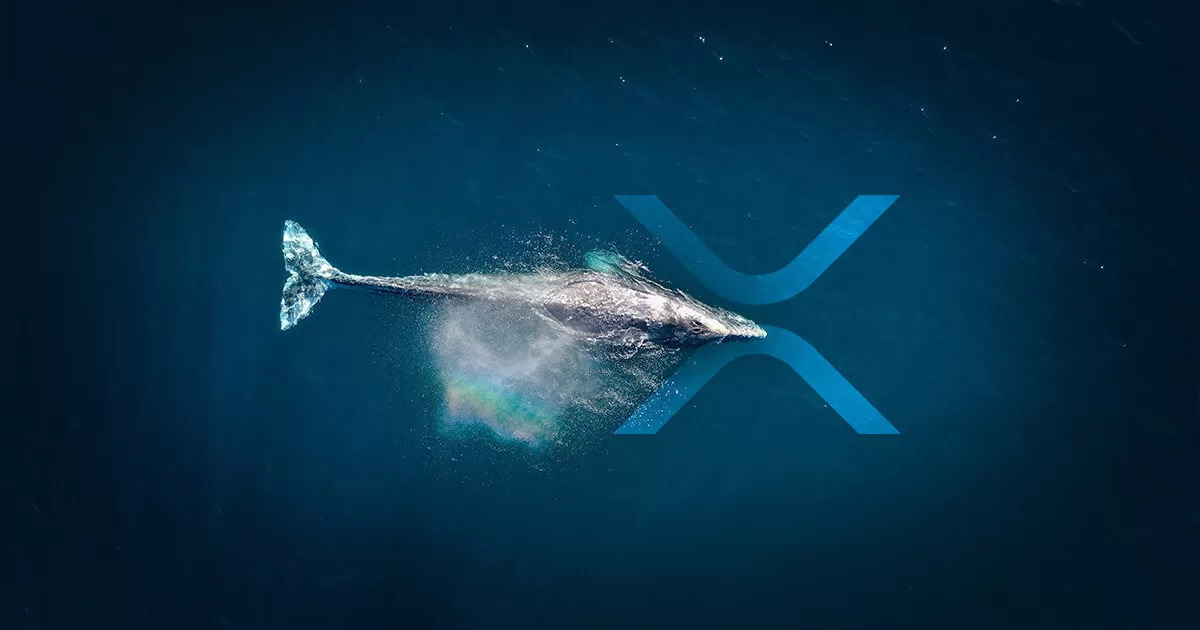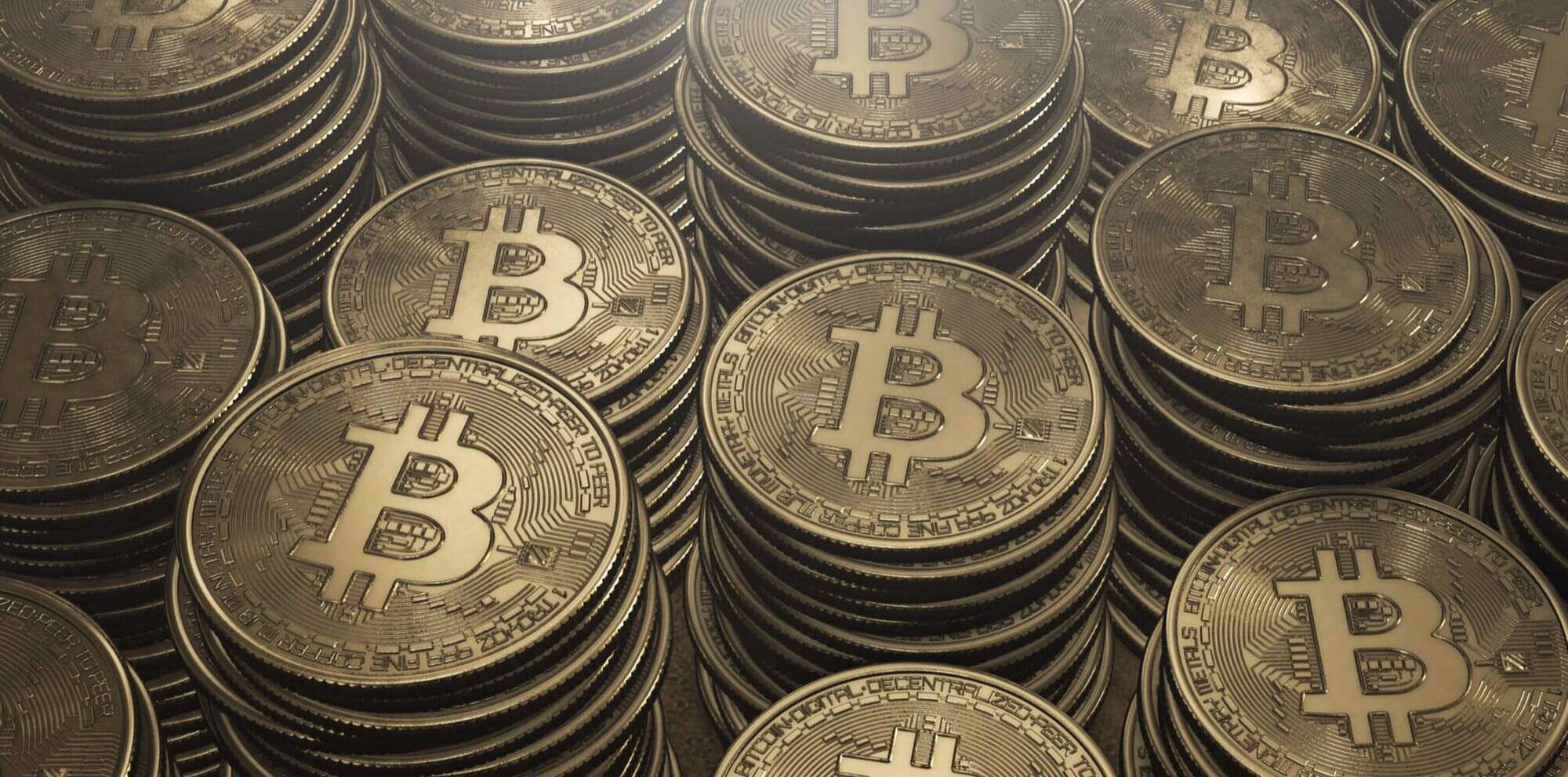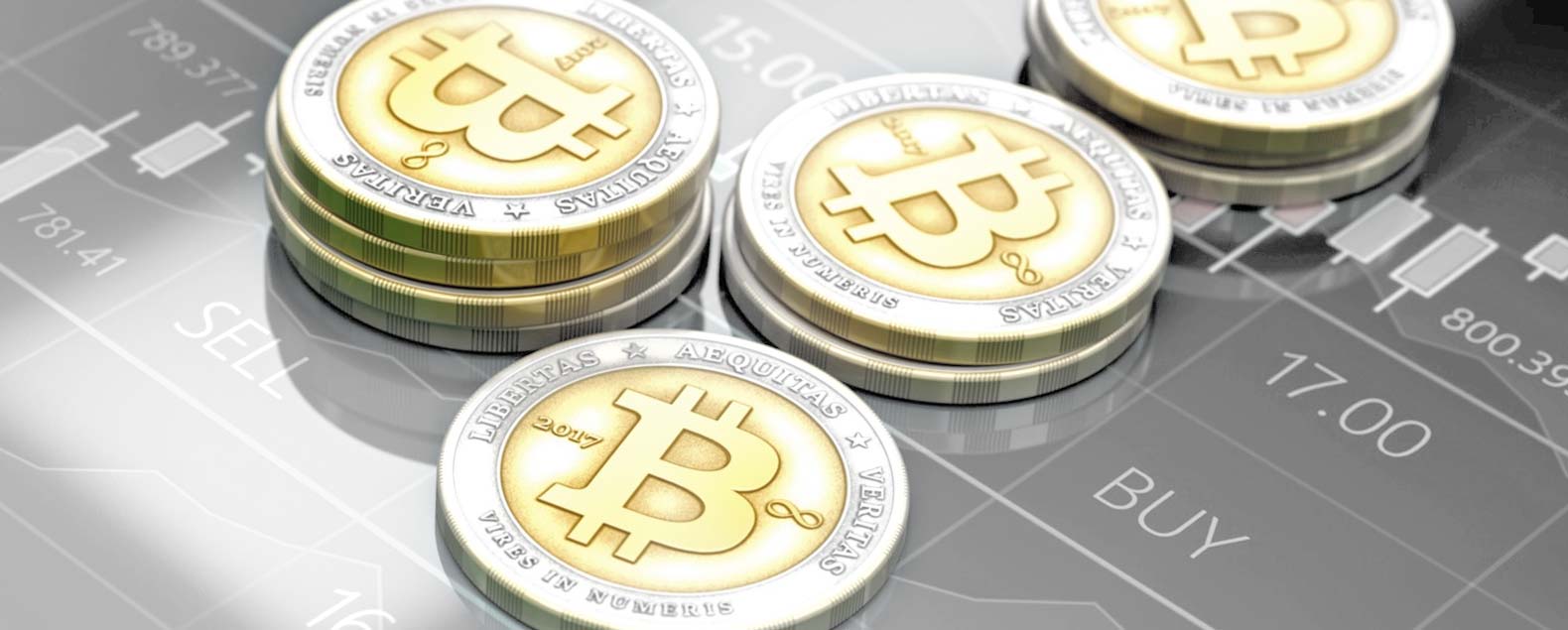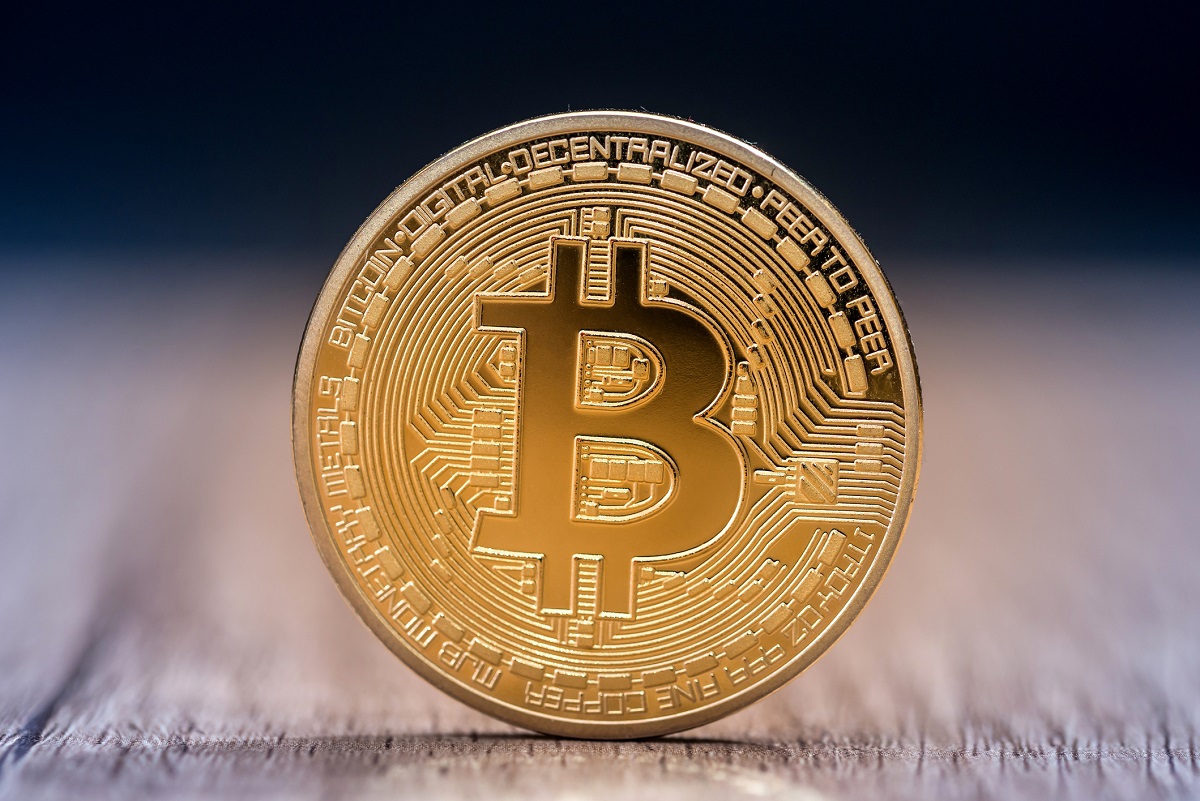Introduction
Welcome to the exciting world of cryptocurrency, where digital assets like XRP have captured the attention of investors and enthusiasts around the globe. If you’re new to the scene, you might have come across the term “whale” and wondered what it means in the context of crypto. This article aims to provide insights into the concept of whales in the crypto world, specifically focusing on XRP.
XRP, created by Ripple Labs, is a popular digital currency known for its fast transaction speeds and low fees. It functions as both a cryptocurrency and a technology for facilitating cross-border payments. With its growing popularity, more and more individuals are considering investing in XRP to potentially reap the benefits of its success.
But what exactly defines a “whale” in the crypto space? In simple terms, a whale refers to an individual or entity that holds a substantial amount of a particular cryptocurrency. These entities are often influential players in the market and have the potential to impact the price and overall dynamics of the asset they hold.
Becoming a whale in the XRP community is an aspiration for many investors. It signifies not only significant wealth but also a considerable stake and influence in the market. However, reaching this level requires careful consideration of several factors, including XRP supply, price fluctuations, and your personal investment strategy.
In the following sections, we will explore these factors in detail, providing you with a comprehensive understanding of the XRP ecosystem and how you can navigate it to potentially become an XRP whale. So, let’s dive in!
What is XRP?
XRP is a digital currency that was created by Ripple Labs, a technology company focused on revolutionizing cross-border payments and remittances. Unlike traditional cryptocurrencies like Bitcoin, which aim to be decentralized and independent of any centralized entity, XRP functions as part of a larger ecosystem designed to facilitate fast, low-cost international money transfers.
One of the main advantages of XRP is its speed and efficiency. Traditional banking systems can take days or even weeks to settle cross-border transactions, incurring high fees along the way. XRP, on the other hand, enables near-instantaneous transfers that settle in just a few seconds. This makes it an attractive option for financial institutions and individuals looking for faster and more cost-effective ways to send money across borders.
Ripple Labs developed the technology behind XRP, known as the RippleNet, which is a network of banks and payment providers using XRP for real-time international transfers. These organizations can utilize XRP as a bridge currency, converting it into local currencies at the destination, thereby eliminating the need for multiple intermediaries and reducing costs.
One unique feature of XRP is its consensus algorithm, called the XRP Ledger. Instead of relying on proof-of-work or proof-of-stake mechanisms, the XRP Ledger uses a consensus protocol based on a group of trusted validators. This allows for faster transaction confirmations and a more energy-efficient network.
It’s important to note that XRP and Ripple Labs are separate entities. XRP exists independently of Ripple Labs, and its value is driven by market demand and adoption. Ripple Labs holds a significant amount of XRP, but the company’s influence on the cryptocurrency’s price and ecosystem is a topic of debate and speculation.
In summary, XRP is a digital currency designed by Ripple Labs to revolutionize cross-border payments and remittances. Its speed, low fees, and integration with the RippleNet network make it an appealing option for financial institutions and individuals looking to streamline international money transfers. As we delve deeper into the concept of XRP whales, understanding the fundamentals of XRP will be crucial for identifying potential opportunities and risks in the market.
What is a Whale in the Crypto World?
In the crypto world, the term “whale” refers to an individual or entity that holds a significant amount of a particular cryptocurrency. Just like in traditional finance, these whales are influential players in the market and have the potential to impact the price and overall dynamics of the asset they hold.
The origin of the term “whale” in the context of cryptocurrency comes from the ocean, where large and powerful creatures dominate their environment. Similarly, crypto whales dominate the market due to their substantial holdings and the influence they wield.
Whales can come in various forms, ranging from individual investors who have accumulated a substantial amount of a particular cryptocurrency to institutional investors, cryptocurrency exchanges, or even mining pools that own a significant portion of a specific digital asset.
What sets crypto whales apart is the sheer scale of their holdings. Their accumulation of large amounts of a cryptocurrency can give them the power to sway market sentiment, trigger price movements, and even manipulate the market to their advantage. This influence can be a double-edged sword, as whales can impact the market both positively and negatively.
On one hand, if a whale decides to sell off a significant portion of their holdings, it can lead to a sudden decrease in the price of the cryptocurrency. This scenario is often referred to as a “whale dump” and can create panic selling among other investors, resulting in a market downturn.
On the other hand, when a whale decides to accumulate more of a particular crypto or hold onto their existing holdings, it can create a bullish sentiment in the market. Other investors may follow suit, causing a surge in demand and subsequently driving up the price of the cryptocurrency.
It is worth noting that not all large holders of cryptocurrencies are considered whales. The term typically applies to those who actively engage in market activities and have the financial capability to impact the market significantly. Their actions are closely monitored by analysts, traders, and investors who try to decipher their moves to gain insights into market trends.
Understanding the presence and behavior of whales in the crypto market is essential for investors. It allows them to gauge potential price movements, identify trends, and make informed investment decisions. However, it’s important to exercise caution when interpreting the actions of whales, as their motives and strategies can be complex and unpredictable.
As we delve into the world of XRP and its whales, it’s important to keep in mind the influence and significance they hold in shaping the market dynamics of this particular cryptocurrency.
Factors to Consider
When it comes to becoming an XRP whale, there are several factors that you need to consider. These factors play a crucial role in determining your potential to accumulate a significant amount of XRP and have a substantial impact on the market. Here are some key factors to keep in mind:
- XRP Supply: The total supply of XRP plays a significant role in determining its scarcity and value. As of now, there is a fixed supply of 100 billion XRP, with a portion held by Ripple Labs. Understanding the distribution of XRP and the potential effects it may have on the market is essential when evaluating your investment strategy.
- XRP Price: The price of XRP can fluctuate significantly due to various factors, including market demand, news events, and overall market sentiment. Monitoring and analyzing price movements can help you make informed decisions and identify potential entry or exit points in your journey to becoming an XRP whale.
- XRP Wallets and Holdings: Keeping track of XRP wallets and the holdings of known whales can provide insights into the current market dynamics. Whale wallets are often scrutinized by market observers to gauge the sentiment and potential actions of these influential players. Monitoring whale movements and transactions can help you understand the behavior and strategies of existing whales.
- Market Conditions: The overall market conditions and trends in the cryptocurrency industry can impact the opportunities and risks involved in becoming an XRP whale. Factors such as regulatory developments, technological advancements, and market sentiment towards cryptocurrencies can all have a significant impact on XRP’s price and adoption.
- Risk Management: As an aspiring XRP whale, it is crucial to have a well-defined risk management strategy. Cryptocurrency markets can be highly volatile, and sudden price swings can lead to significant gains or losses. Understanding your risk tolerance and implementing risk mitigation strategies, such as diversification and stop-loss orders, can help protect your investment and navigate potential market turbulence.
By carefully considering these factors, you can better assess the opportunities and risks associated with becoming an XRP whale. Remember, while the allure of acquiring a substantial amount of XRP may be enticing, it is essential to approach your investment journey with diligence, research, and a thorough understanding of the market dynamics.
XRP Supply
The total supply of XRP is an important factor to consider when evaluating its potential as a whale. Understanding the distribution of XRP and its future supply dynamics can provide insights into its scarcity and long-term value.
Currently, the total supply of XRP is set at 100 billion coins. It’s important to note that not all of these coins are in circulation. A significant portion of the XRP supply is held by Ripple Labs, the company behind XRP. Ripple Labs owns around 55 billion XRP, which has often been a subject of discussion and speculation within the crypto community.
Ripple Labs aims to utilize its XRP holdings to enhance the adoption and utility of the digital currency. They intend to partner with financial institutions, payment providers, and other stakeholders to leverage XRP for cross-border transactions and liquidity purposes through their RippleNet network.
The distribution of XRP is continuously evolving. Ripple Labs periodically sells portions of its XRP holdings to fund its operations and projects. These sales are often conducted through institutional sales and partnerships. However, the exact details and impact of these sales on the market can be complex and difficult to ascertain.
Understanding the distribution of XRP holdings among different entities is also important. Monitoring the wallets and holdings of known whales can provide insights into the concentration of XRP among influential players. This information can help gauge the potential impact of these whales on the market and the overall dynamics of XRP.
Additionally, it’s worth noting that the XRP supply is not subject to inflation. Unlike some cryptocurrencies that have a built-in issuance mechanism, the total supply of XRP is fixed, and no new coins are being minted. This limited supply can contribute to the scarcity and potential value of XRP as demand grows.
As an investor aspiring to become an XRP whale, understanding the XRP supply dynamics can help you assess the potential impact on price and market dynamics. Keeping track of Ripple Labs’ XRP sales and monitoring the distribution of XRP among wallets can provide insights into potential market trends and trading opportunities.
While the XRP supply is an essential factor to consider, it is important to remember that it is just one piece of the puzzle. Analyzing the XRP market from various angles and considering other factors, such as price movements, market conditions, and risk management, is crucial for making informed investment decisions.
XRP Price
The price of XRP is a critical factor to consider when aiming to become an XRP whale. Fluctuations in the price can have a significant impact on the value of your holdings and your potential influence in the market.
Like other cryptocurrencies, the price of XRP is driven by supply and demand dynamics. The market demand for XRP, influenced by factors such as investor sentiment, adoption rates, news events, and overall market conditions, can drive the price up or down.
Tracking the price movements of XRP is essential for identifying potential entry or exit points in the market. Observing trends, chart patterns, and analyzing price history can provide insights into potential price reversals or continuations. Technical analysis tools and indicators can also aid in understanding market sentiment and identifying potential trading opportunities.
It’s important to note that the cryptocurrency market, including XRP, is known for its volatility. Price movements can be rapid and substantial, presenting both opportunities for profit and risks of losses. As an XRP whale, managing this volatility and having a clear risk management strategy is crucial.
Market sentiment and external factors can also impact the price of XRP. News events, regulatory developments, and technological advancements in the crypto ecosystem can trigger significant price movements. Staying informed about these factors and their potential implications for XRP can be beneficial for making informed investment decisions.
Another aspect to consider regarding XRP’s price is its correlation with other cryptocurrencies, particularly Bitcoin. As a prominent digital asset, Bitcoin often sets the overall market trend. Changes in Bitcoin’s price can have a cascading effect on other cryptocurrencies, including XRP. Understanding this correlation can provide additional insights into XRP’s price movements.
It’s worth mentioning that as an XRP whale, your actions in the market can also influence the price to some extent. Large buy or sell orders can impact the market sentiment and trigger price movements. However, it’s important to exercise caution and avoid engaging in manipulative practices, as the crypto market is closely monitored for such activities.
While the price of XRP is a crucial factor to consider, it’s important to approach it with a long-term perspective. Short-term price movements can be unpredictable and driven by various factors. Conducting thorough research, understanding the fundamentals of XRP, and evaluating its potential for long-term growth can help you navigate the complexities of the XRP market and optimize your position as an XRP whale.
XRP Wallets and Holdings
Monitoring XRP wallets and the holdings of known whales is an essential aspect to consider when aiming to become an XRP whale. Understanding the distribution of XRP among wallets can provide valuable insights into market dynamics and potential trading opportunities.
Whales in the XRP ecosystem are individuals or entities that hold a significant amount of XRP. By analyzing their wallets and transactions, we can gain insights into their accumulation and trading patterns. These whales often attract attention from market observers, as their actions can have a considerable impact on the price and sentiment surrounding XRP.
There are various resources available to track XRP wallets and their holdings. Blockchain explorers and analytics platforms allow you to explore the XRP blockchain and view wallet addresses, transactions, and associated holdings. These tools can also provide information on the movement of XRP between wallets and exchanges.
By monitoring whale wallets, you can gain a sense of the concentration of XRP among influential players. This information can help evaluate potential market trends and understand the sentiment of large-scale investors. Additionally, it can provide insights into the actions of whales, such as accumulation, distribution, or profit-taking.
It’s important to note that not all large holders of XRP are considered whales. Some entities, such as exchanges or custodial services, may hold large amounts of XRP on behalf of their customers. These entities may not have the same level of influence on the market as active traders or long-term holders.
Analyzing the movements of XRP in whale wallets can also provide valuable insights. Sudden and significant transfers of XRP between wallets can indicate potential market activity or signal future price movements. Tracking these transactions can help identify trends and better understand the behavior and strategies of existing whales.
However, it’s crucial to approach whale monitoring with caution. While their actions can provide insights, it’s important to remember that individual trading decisions and strategies may not always be predictable or indicative of broader market trends. Market manipulations and coordinated activities among whales are potential concerns in the crypto space.
As an aspiring XRP whale, understanding the wallets and holdings of influential XRP investors can be a valuable tool in your investment strategy. It can help you gauge market sentiment, identify potential trading opportunities, and make informed decisions. However, it’s essential to consider this analysis as one part of a holistic approach and combine it with other market indicators and fundamental analysis to optimize your XRP investment strategy.
Becoming an XRP Whale
As an aspiring XRP whale, accumulating a significant amount of XRP and wielding influence in the market requires careful planning and strategic decision-making. Here are some key considerations to help you on your journey:
1. Define Your Investment Strategy: Clearly outline your investment goals, risk tolerance, and timeframe. Determine whether you want to be an active trader or a long-term holder. This will help guide your decision-making process and shape your approach to accumulating XRP.
2. Conduct Thorough Research: Gain a deep understanding of XRP and its market dynamics. Stay updated on news, developments, and regulatory changes that may impact the cryptocurrency. Thorough research will inform your investment strategy and help you make informed decisions.
3. Manage Risk: Cryptocurrency markets can be highly volatile. Establish a robust risk management strategy to protect your investment. Diversify your portfolio, set stop-loss orders, and avoid investing more than you can afford to lose.
4. Monitor Market Trends: Stay informed about market trends and price movements. Monitor technical analysis indicators, news events, and sentiment in the XRP community. This information will help you identify potential trading opportunities and make informed investment decisions.
5. Track XRP Wallets and Holdings: Monitor whale wallets and the movements of XRP. Analyze their accumulation and trading patterns. While individual actions may not always be indicative of broader market trends, monitoring whale behavior can provide valuable insights into sentiment and potential market activity.
6. Consider Dollar-Cost Averaging: Instead of investing a large sum at once, consider a strategy known as dollar-cost averaging. This involves investing a fixed amount of money at regular intervals, regardless of the current price. This approach can help mitigate the impact of short-term price fluctuations.
7. Stay Abreast of Regulatory Developments: Keep an eye on regulatory developments and legal frameworks surrounding cryptocurrencies. Changes in regulations can impact market sentiment and the adoption of XRP. Staying informed will help you navigate potential challenges and comply with relevant laws.
8. Network and Collaborate: Engage with the XRP community and connect with like-minded individuals. Participate in forums, social media groups, and attend conferences to exchange ideas and gain insights from experienced investors. Networking can broaden your perspective and open doors to potential opportunities.
9. Exercise Patience and Discipline: Becoming an XRP whale takes time and discipline. Price movements and market conditions may not always align with your expectations. Avoid making impulsive decisions based on emotions and stick to your investment strategy.
Remember, becoming an XRP whale requires a combination of strategy, perseverance, and a deep understanding of the market. While the journey may have its challenges, with careful planning and informed decision-making, you can position yourself to potentially accumulate a significant amount of XRP and have an impact in the market.
Conclusion
Embarking on a journey to become an XRP whale requires careful consideration of various factors, including the XRP supply, its price dynamics, monitoring wallets and holdings, and defining a solid investment strategy. As with any investment endeavor, thorough research, risk management, and a long-term perspective are crucial for success.
Understanding the fundamentals of XRP, such as its speed, utility, and integration with the RippleNet network, provides a solid foundation for evaluating its potential as a whale. Additionally, keeping a close eye on market trends, news events, and regulatory developments will help you navigate the ever-changing crypto landscape.
While monitoring XRP wallets and the behavior of known whales can provide valuable insights, it’s important to approach this analysis with caution. Individual actions may not always reflect broader market trends, and the potential for market manipulation exists. Combining wallet monitoring with other market indicators and fundamental analysis will lead to a more comprehensive understanding of the XRP ecosystem.
Achieving whale status in the XRP community requires patience, discipline, and ongoing education. It’s essential to continually assess and adjust your investment strategy in response to market conditions and new information. Networking with other investors and staying connected to the XRP community can provide additional support and opportunities for learning.
Remember, becoming an XRP whale is not solely about the quantity of XRP you hold but also about the impact you can have on the market. Responsible investment practices, ethical trading strategies, and adhering to regulatory compliance are important elements of maintaining a healthy and sustainable crypto market.
By carefully considering the factors discussed in this article, conducting thorough research, and staying informed, you can position yourself for potential success in your pursuit of becoming an XRP whale. Keep in mind that the crypto landscape is dynamic and ever-evolving, and it’s important to remain adaptable and responsive to new developments and opportunities that may arise.

























